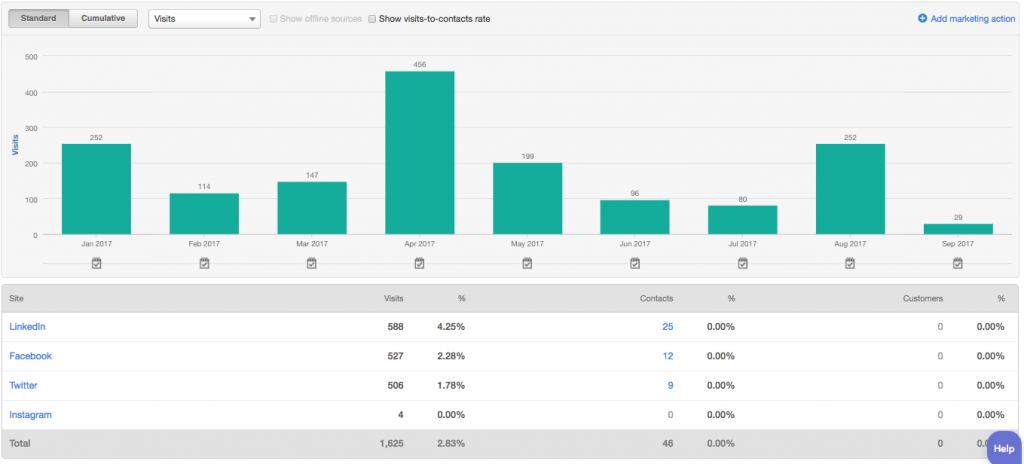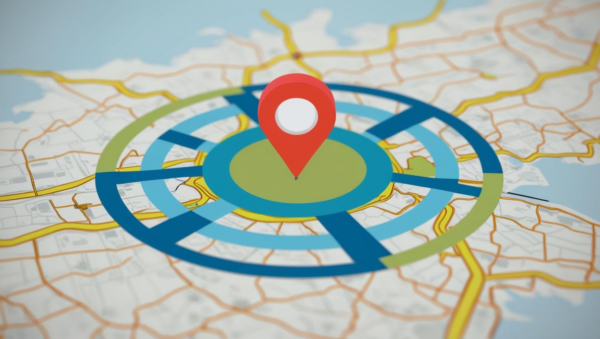
Like, Who Cares? 4 Facebook Metrics That Matter
You’ve just published a great post on Facebook. It has an eye-catching photo of your newest vehicle in stock with a thoughtful caption that’s sure to grab attention . . . and now you sit back and wait.
Ah, there they are. One by one, the likes are rolling in.
Sit back and enjoy that false comfort, because that might be all you’re getting.
If your goal is to grow your automotive business, you need to focus on the metrics that matter. Likes, comments, and shares may boost your self-esteem a little bit, but that’s about all they’re doing.
Learn what metrics actually grow your business and increase your sales over time.
What’s a Metric?
There’s a difference between a measurement and a metric.
Think of it this way: if you had 5,000 website visits last month, that’s a measurement. But a metric puts that measurement in context. So if you had 5,000 website visits last month, and you want to increase your web traffic by 5% every month, that’s a metric.
A measurement is simply data. A metric provides incentive to improve that data.
4 Facebook Ad Metrics that Matter
Of course, likes and shares aren’t bad. They can certainly help get more eyes on your content.
But they offer little advantage to your business if engagement stops there. What’s the point in creating a social media strategy if you see no return on investment (ROI)?
What really matters is people clicking on your post — and what happens beyond that.
Here are four business metrics on Facebook that may actually make an impact on your dealership’s bottom line.
1. Clicks
It sounds simple. (And it is!) By measuring clicks, you’ll be able to gauge how well your Facebook campaign is doing.
This metric simply measures how many times someone clicked on the link in your post. Clicks are helpful to watch because if you have a high click-through rate (CTR), that means your audience is interested in the content you are posting.
Plus, you’re moving leads along your sales funnel by getting them from Facebook to your search results page (SRP), vehicle description page (VDP), or other high-impact landing pages.
View click reports on Facebook Ads Manager. Take some time to dig in and identify common characteristics in ads that received more clicks compared with those that didn’t do as well.
Take note of trends, and use this information get to know your audience better so that you can tailor future ads to what catches their interest.
However, it’s not all about clicks. Beginners measure how users interact with their ads; experts measure what happens after users click on their ads.
2. Cost per Click (CPC)

Image credit: Hubspot
Let’s take this a bit deeper.
When you set a budget for an ad, you pay for each click on that ad. Cost per click (CPC) is the actual price you pay per click in your marketing campaign, calculated by dividing the total cost of your clicks by the total number of clicks.
The overall ROI of your ad campaign is determined by how much you’re paying per click and the quality of the traffic those clicks are bringing in. You want to target clicks that are both inexpensive and valuable.
Take a look at your campaigns, and identify which ones have a lower CPC. But, again, dig into your analytics to find out what’s happening after the click.
How long are visitors staying on your site? Are they converting into leads? Did they subscribe to your blog? Are they contacting you about taking test drives? If not, your clicks may be inexpensive, but they’re not valuable.
With all this in mind, it’s important to remember that your goal should not be to increase your CTR and decrease your CPC. Your goal is to drive high-quality leads who turn into customers.
3. Reach
Bigger isn’t always better. Remember, you want to target only qualified leads, not every person with a Facebook account. Relevancy can make or break the effectiveness of your strategy.
That being said, your metrics are only as effective as the size of your social reach. You do want to grow your audience — just make sure it’s the right people.
Did a Facebook campaign grow your reach last month? Take a good look at what you did, and figure out why. What made it successful? Which tactics didn’t work? What can you implement for next time?
Grow your following by identifying a set of core topics or keywords that reflect the interests of your buyer persona. Leverage your existing audience by giving them share-worthy content. Run A/B tests on your Facebook ads targeting various audience characteristics to learn what works best.
Growing your social media following may seem like a daunting task, but spending 10 minutes a day interacting with users and scheduling relevant content will help build valuable connections.
Don’t forget to use analytics to determine how your Facebook efforts are affecting your reach, traffic, and leads so that you can adjust your efforts accordingly.
4. Sources
It’s time to justify all your hard work on your automotive social media strategy by measuring your Facebook advertising ROI.
For example, with Hubspot’s Sources tool, you can identify how many visits, customers, and contacts your social media channels have generated for your dealership. Click on “Social Media” in your Sources Report, and you can even break down the information by campaign or specific channels.

When reviewing this data, look at your number of visits from social media, the number of leads generated, and the number of customers. Which social media channels performed the strongest? Did your Facebook ads pull in customers?
Say, for example, that four new customers came in via Facebook this month for a test drive and to purchase a vehicle — you can know that your Facebook efforts were directly responsible for four customers’ worth of revenue.
Of course, you can also dig into your traffic source dimensions in Google Analytics. Look around and consider the medium by which your social traffic is arriving to your site (paid search, organic, referrals, etc.). Ask yourself the same questions mentioned above.
It’s difficult to measure the ROI of social media for your dealership if you don’t have well-defined social media goals. If you’re not seeing results you want, it’s time to reexamine and test some new techniques.
Tools for Measuring Impact
There are a couple of different tools you can use to really get the most out of your Facebook efforts. Let’s talk about the Facebook pixel and Offline Events.
Facebook Pixel
If you’ve been learning from us for any amount of time, you’ve probably heard us talk about the Facebook pixel. But it’s so valuable that we’d mention it 100 times to get the point across to our friends in the auto industry!
The pixel is a bit of code that helps you measure the effectiveness of your Facebook campaigns. By installing it onto your website, you can track when Facebook’s logged-in users visit your site and where they go.
The pixel gives you the ability to track conversions from Facebook, create retargeting ads based on users’ online activity, and optimize your ad delivery to people who are most likely to convert.
All in all, the pixel is a must-use tool for measuring your Facebook metrics.
Learn more about the Facebook pixel »
Offline Events
We love Offline Events.
There are few things more exciting at 9 Clouds than when we pull in the data for offline conversions and see that someone purchased a vehicle after clicking on an ad that we created for a client. Yeah, you can do that.
Once you set up offline event tracking for your dealership, you will clearly see how your Facebook efforts create real-life results — like a test drive or even a sale.
In addition to connecting your digital ads to business transactions, you can see what types of audiences are seeing your ad before making purchases, create custom audiences based on offline information, tailor your campaign parameters to drive future results, and — perhaps the most satisfying — prove return on your ad spend.
Plus, to make things even easier, you can use our new tool, Hydra, to save a ton of time (and headaches) in your Offline Events imports!
Learn more about Offline Events »
Identify Your Key Performance Indicators (KPIs)
The challenge with analytics is that practically everything can be measured. But when everything is measured, it’s easy to lose focus.
You must identify which metrics are most valuable for your dealership in measuring growth and success.
These particular metrics, called key performance indicators (KPIs), are tied to a goal. For example, for our automotive clients at 9 Clouds, our KPIs often include SRP and VDP views.
By identifying these KPIs, you’ll have insight into your overall social media marketing performance and will be able to define and evaluate success as a whole.
Head over to Hubspot to dig deeper into choosing the right KPIs for your business.
Need More Facebook Tips?
If you’re ready to keep learning about the vast world of Facebook, you’re in the right place.
We love to share our knowledge, so go ahead and learn from our free Facebook webinar, or request a digital audit.







